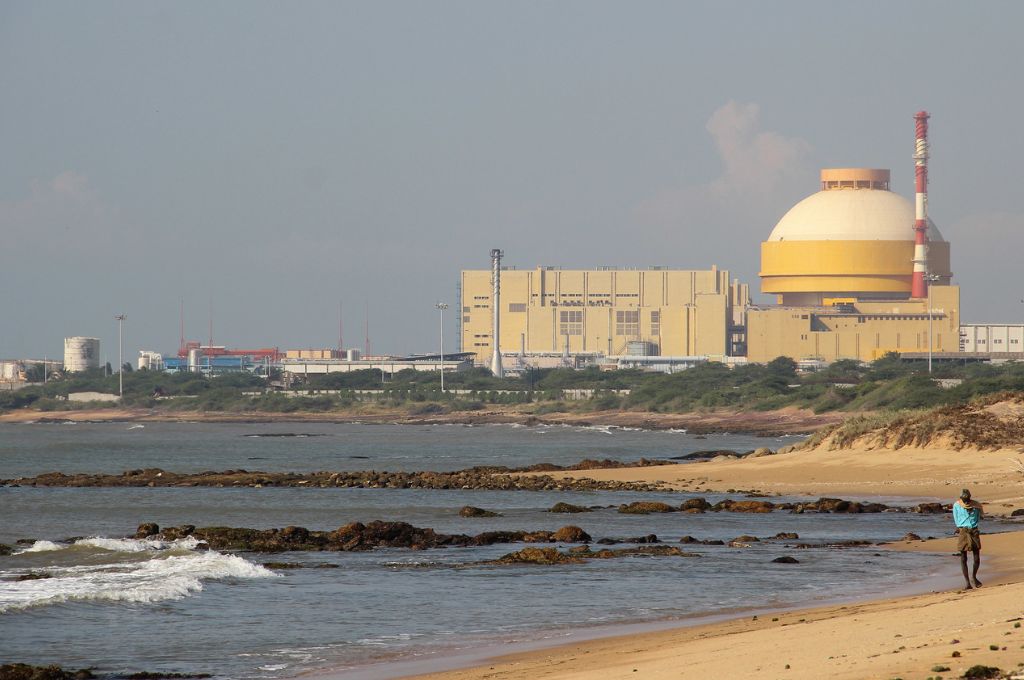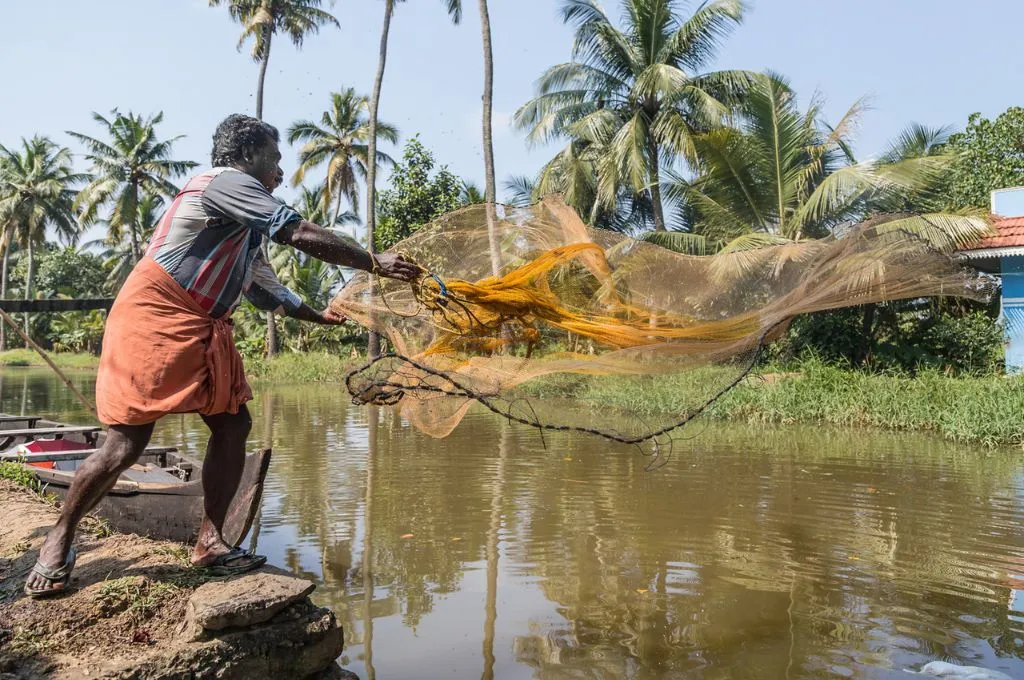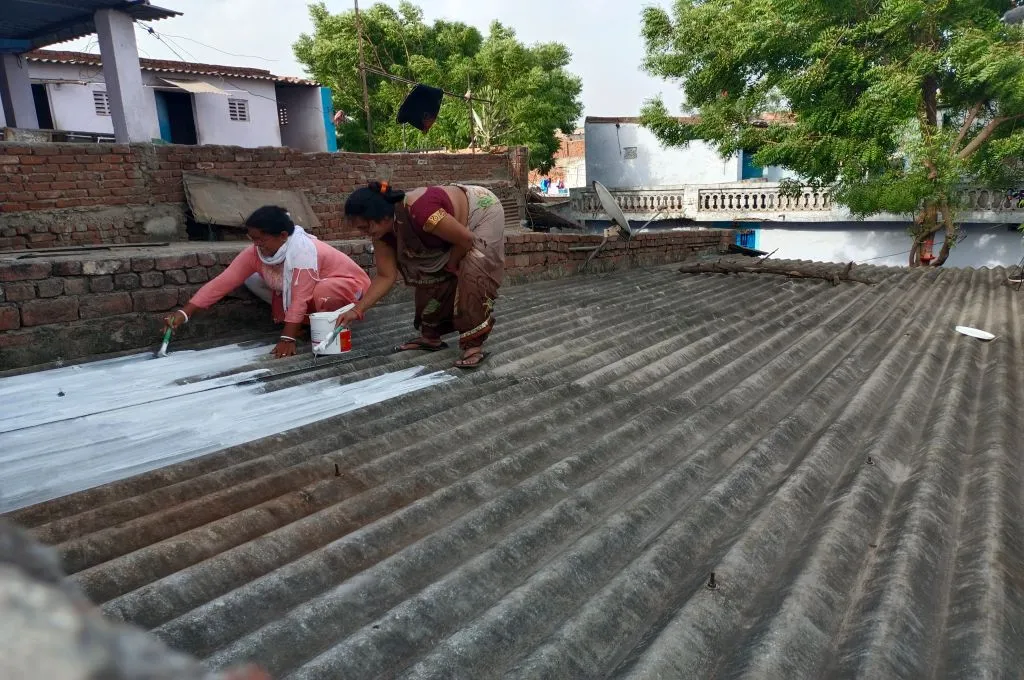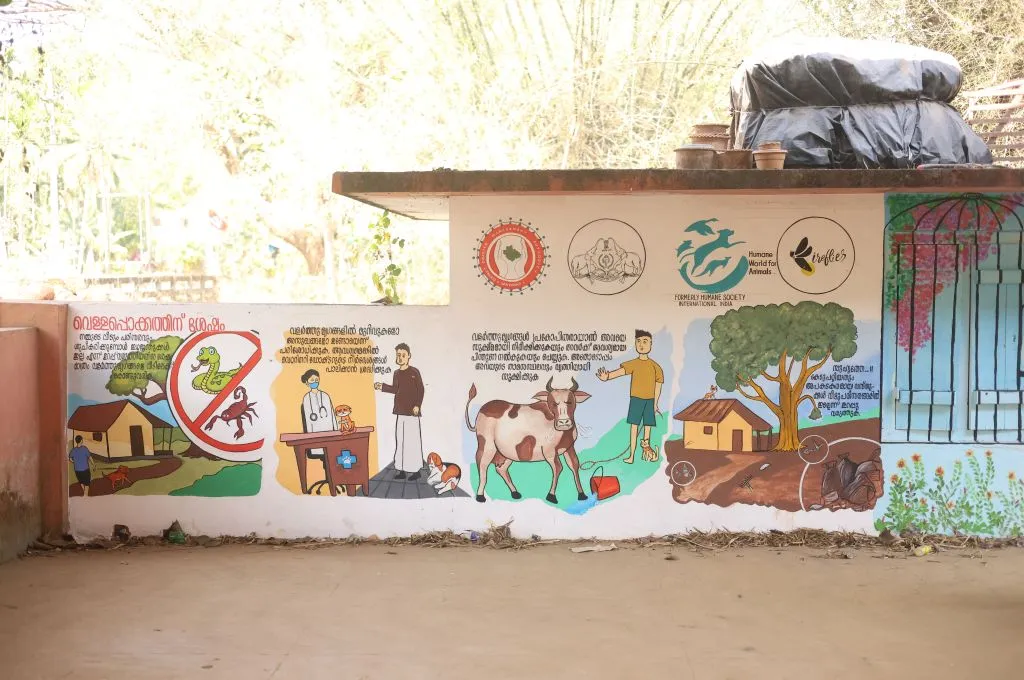Tackling climate-change driven challenges found mention in the Union Budget 2024-25 presented by Finance Minister Nirmala Sitharaman on July 23. The budget pushes for energy security in several ways including building small nuclear energy reactors. Ways to tackle climate events also found place in it, with the central government’s proposal to fund research and development in climate-resistant crops, and managing floods in some states in the north.
However, on most other counts, the budget overlooked the environment. Some experts said that it will remain to be seen how much policy is translated into action; others called it a “lack-lustre” budget that “wants [for] imagination”.
Climate and farming, floods, finance
Finance Minister Nirmala Sitharaman on Tuesday presented the third NDA government’s union budget for the year 2024-25 on July 23 in Parliament. Sitharaman listed nine priorities for the government’s latest budget.
Of particular interest with respect to the environment, climate and energy were two priorities: the first priority, “productivity and resilience in agriculture”, which included some measures to improve farming and farmer welfare, including the development of climate-resilient crops; and the sixth priority, “energy security”.
Talking about the first priority, “productivity and resilience in agriculture”, Sitharaman announced that one crore farmers will be introduced to natural farming over the next two years. Ten thousand “need-based bio-resource centres” will also be established.
The union government will complete the Polavaram project in Andhra Pradesh which is a “lifeline” for farmers, Sitharaman said. The government will also release 109 climate-resilient varieties of crops for farmers to grow. This will include 32 field and horticultural crop varieties, announced Sitharaman.
However, integrating hyper-granular risk assessment and profile into developing these climate-resilient varieties would be “very important to make this successful as a first step”, said Abinash Mohanty, Sector Head Climate Change and Sustainability, IPE Global.
“While we develop these resilient varieties we need to understand the hazard risk and vulnerability at a hyper-granular scale…because when you develop these varieties you bring them to the field assuming that there is a singular event which is going to impact it, such as a flood. But the climate risk landscape is also changing…So even if you have a resilient variety you may end up managing a flood-resistant variety during a drought,” Mohanty clarified.
For the Crop Insurance Scheme—which becomes crucial for farmers in this time of climate change—the latest budget has allocated Rs. 14,600 crores, up from Rs. 13,625 crores from last year’s estimates (which were later revised to Rs. 15,000 crores).
Bihar got the lion’s share when it came to flood management: Sitharaman announced several plans through accelerated irrigation projects worth Rs. 11,500 crore including intra-state schemes such as building of new barrages in the state, projects dealing with river pollution and more.
The other states that found mention here were Assam, Himachal Pradesh, Sikkim and Uttarakhand. However, apart from a generic statement to the note of “we will provide assistance”, the Finance Minister did not give any other specific details for many of these states.
A taxonomy for climate finance
The government will develop a “taxonomy for climate finance” to enhance the availability of capital for climate adaptation and mitigation, “which will support India’s climate commitments and green transition”, Sitharaman said.
Such a taxonomy of climate finance is important because there has to be a clear segregation between developmental finance and climate finance, Mohanty told The Wire.
“In order to boost our climate action, we need money and that money has to be from public, private and international funding. In order to have that blending of all this…we need to have a home-grown taxonomy on climate finance because anything and everything cannot be climate finance,” Mohanty said.
Mohanty added that a net zero target has also been committed and to achieve it it has to be ensured that just transition happens.
“And for that we need more financing. At the central level, our climate conversations may be very good but translating them to levels below such as sub-national or district levels, where the real action begins, we need to have a clear cut mandate,” said Mohanty.
A taxonomy of climate finance, he said, would enable this.
However, the budget “lacks focus on improving climate data and information infrastructure and making it more people-centric, especially when India is losing millions in loss and damage due to climate extremes”, Mohanty said.
“The budget also fails to make cooling appliances affordable, available and accessible. The budget’s impetus on start-up ecosystems aligns with its promise of being a “vishwa guru” by becoming the climate solutions capital to the world, but the devil lies in the detail,” he added.
Energy security and role of private players
Energy security also was part of the list of main priorities in the budget this time, the sixth of the nine priorities “to generate opportunities for all” as announced by Sitharaman. But instead of a push for renewable energy however, nuclear energy found a fillip this time.
The latest budget allocates Rs. 2,228 crores for nuclear power projects.
“Nuclear energy is expected to form a very significant part of the energy mix for Viksit Bharat. Towards that pursuit, our government will partner with the private sector for (1) setting up Bharat Small Reactors, (2) research & development of Bharat Small Modular Reactor, and (3) research & development of newer technologies for nuclear energy,” Sitharaman announced in her speech. As per her speech, the research and development funding announced in the interim budget will be made available for this sector.
Under the outlay of major schemes, the latest budget allocates Rs. 2,228 crores for nuclear power projects across the country – a rise from the budget estimates of Rs. 442 crores in 2023-24 that were further revised to Rs. 1,791 crores the same year.
“The budget has focussed on development of small nuclear reactors. While India needs to diversify its energy sources, the viability of such projects is still questionable,” Vibhuti Garg, Director, South Asia at Institute for Energy Economics and Financial Analysis (IEEFA) told The Wire.
Such projects are expensive, the availability of fuel is a big issue and then there is the safety issue too, she clarified.
“India needs to increase its R&D spending across the value chain from renewable energy deployment to mining and extracting of minerals to circular economy,” she added.
The role of private players is also set to increase in India’s nuclear energy sector. In February this year, there was talk of the government inviting private firms to invest about USD 26 billion in the nuclear energy sector in the country to increase the amount of electricity from sources that don’t produce carbon dioxide emissions, reported Reuters.
The government is in talks with at least five private firms including Reliance Industries, Tata Power, Adani Power and Vedanta Ltd to invest around Rs. 440 billion each, Reuters reported two unnamed sources as saying.
In her budget speech, Sitharaman also mentioned that the development of indigenous technology for Advanced Ultra Super Critical (AUSC) thermal power plants “with much higher efficiency” has been completed.
“A joint venture between NTPC and BHEL will set up a full scale 800 MW commercial plant using AUSC technology. The government will provide the required fiscal support. Moving forward, development of indigenous capacity for the production of high-grade steel and other advanced metallurgy materials for these plants will result in strong spin-off benefits for the economy,” the Finance Minister said.
However, the efficiency of AUSC thermal power plants is not really that much higher. According to the Ministry of Heavy Industries, AUSC technology-based thermal power plants will yield an efficiency of 46 percent, versus an efficiency of around 38 per cent that subcritical plants provide, and around 41- 42 percent that supercritical plants provide. However, the AUSC thermal power plants will also reduce coal consumption, and therefore, carbon emissions by about 11 per cent as compared to supercritical plants, per the Ministry.
Among the many infra projects that Bihar will obtain, are also power projects including a 2,400 MW project at Pirpainti in Bhagalpur district worth Rs. 21,400 crore, Sitharaman announced in her budget speech. This power plant has been in the works for a few years, and has been revived again: in February this year, the Bihar govt gave a fresh approval for the plant, Times of India reported.
However, this is yet another coal-based power plant in India’s kitty, at a time when the country has pledged to cut down on its carbon emissions as per its Nationally Determined Contributions submitted to the United Nations.
The government will set up a Critical Minerals Mission whose mandate will include an extended producer responsibility framework as well. The auction of the first transfer of off-shore blocks already carried out will also occur, Sitharaman announced.
Critical minerals such as lithium and other rare earth minerals are “critical” for several industries including renewable energy, said Sitharaman. The government would “fully exempt customs duties” on 25 such minerals and reduce the BCD on two of them, she said.

Energy transitions and renewables
“We will bring out a policy document on appropriate energy transition pathways that balances the imperatives of employment, growth and environmental sustainability,” Sitharaman announced while unveiling the budget on July 23.
“Energy transition is critical in the fight against climate change,” she added. To support the energy transition, the government proposes to expand the list of exempted capital goods used in the manufacture of solar cells and panels in India, she said.
The PM Surya Ghar Muft Bijli Yojana, launched to install rooftop solar plants, will enable one crore households to obtain free electricity up to 300 units every month, the Finance Minister said.
“The scheme has generated remarkable response with more than 1.28 crore registrations and 14 lakh applications, and we will further encourage it,” Sitharaman added.
The budget allocation for the PM-eBus Sewa Scheme has also increased from Rs. 20 crores (from last year’s revised estimates) to Rs. 1,300 crores in the latest budget.
In her speech, Sitharaman said that a policy to promote pumped storage projects will be implemented for electricity storage and to facilitate the “smooth integration of the growing share of renewable energy with its variable and intermittent nature in the overall energy mix”.
This policy has been in the offing for long, commented Garg.
“India is witnessing a decrease in battery storage costs but their deployment has been limited as the commercial viability for plain vanilla battery projects is still an issue,” she added.
“When coupled with Renewable Energy projects, we are seeing the price of such blended projects now competing with fossil fuel projects. The industry was expecting cuts in duties and also some more PLI [production-linked incentive] support which can unlock private capital. While there is a specific obligation of storage projects by discoms, we need to see policies actually translating into reality.”
The budget allocation for the Production Linked Incentive (PLI) Scheme for the National Programme on Advanced Chemistry Cell (ACC) Battery Storage this year is Rs. 250 crore: a rise from an allocation of just Rs. 1 crore for 2023-24, which was revised to Rs. 12 crore that year.
“Lacklustre” budget, “wanting imagination”
The government will partner with states and promote aspects including solid waste management projects for 100 large cities, including the use of treated water for irrigation. Sitharaman announced this, and the government facilitating the development of “cities as growth hubs”, under Priority #5, Urban Development, in her budget speech. This will also include the “orderly development” of peri-urban areas.
“Wasn’t that always the case—Growth Engines? Smart Cities? Have we forgotten?” asked Arvind Unni, Member of the Shehri Rashtriya Andolankari Manch (SHRAM) and the National Forum of Urban Struggles – NAPM (National Alliance for People’s Movement).
What is “shameful” is “how our imagination of cities is still stuck on ‘growth’, he added.
The budget misses key sectors like women, workers, urban poor, climate action and cities.
“How can we forget that our cities are the worst affected by pollution, heat waves, floods and other climate impacts? We needed a fresh approach to urban discourse, and now,” Unni told The Wire.
“The Modi 3.0 Union Budget 2024 is lacklustre, without any strong pushes for cities and sustainable development. It wants imagination and policy innovation,” Unni commented.
“Overall, it is a very politically-motivated budget; it is directed at stabilizing the government’s allies with packages for Bihar and Andhra Pradesh, and limited attention to needs in cities and the working class. It also misses key sectors like women, workers, urban poor, climate action and cities,” he added.
More projects pushing for river-interlinking may be in the works. For the interlinking of rivers, which is a centrally-sponsored scheme, the government earmarked Rs.3,500 crores in 2023-24, revised it to Rs.1,400 crores. This year, the government has budgeted an estimate of Rs.4,000 crores for the project.
Currently, the first river-interlinking project is underway in Madhya Pradesh, where the Ken and Betwa rivers will be linked on the borders of the state with Uttar Pradesh in the Bundelkhand region. Environmentally and ecologically, the project will be a disaster, experts have warned.
Interestingly, the budget allocation for the National Tiger Conservation Authority—which oversees and implements not just Project Tiger but Project Cheetah too—is Rs. 35 crores this year, versus Rs. 11 crores last year that was revised to Rs. 15 crores.
The Wildlife Institute of India—which is also part of Project Cheetah—has also received a higher budgetary allocation of Rs. 43 crores this time (versus Rs. 36.5 crores last year which was revised to Rs. 41.2 crores). The Pollution Control Board Rs. 113 crores (higher than last time); and the National Green Tribunal, Rs. 53 crores.
Meanwhile, union environment minister Bhupender Yadav called this year’s budget a “futuristic budget”, that “lays the firm foundation for building Viksit Bharat where growth is green and inclusive”.
“The Union Budget 2024–25 adds energy to India’s efforts to emerge as a developed nation by ushering in a new era of employment and opportunities for all sections of society—youth, farmers, women and poor,” Yadav tweeted on X, formerly Twitter.
This article was originally published on The Wire.





